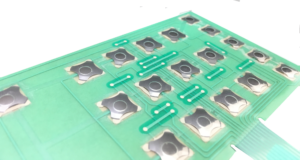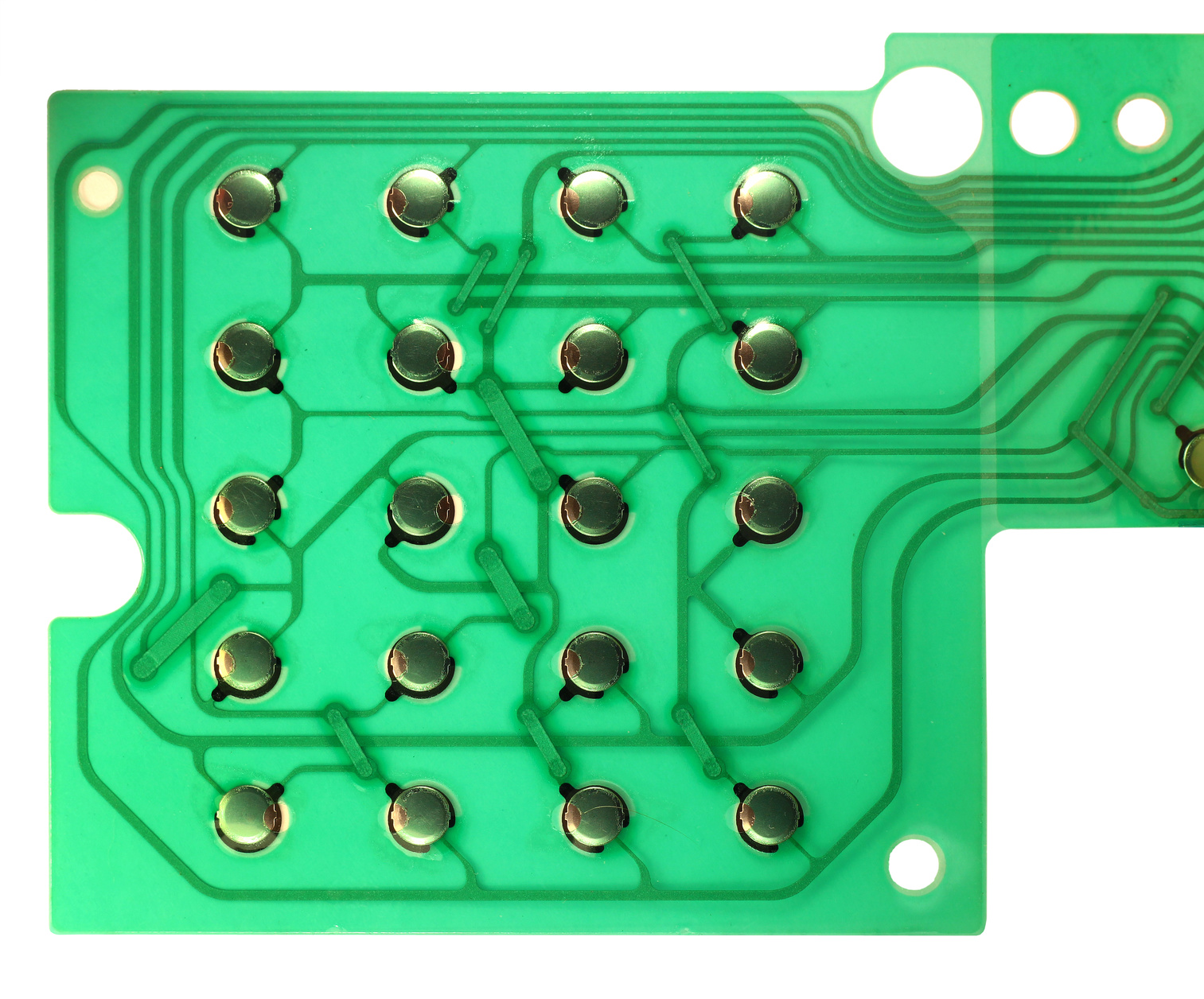Everything About Membrane Layer Switch Over: Comprehending Its Design and Capability
When you think about the control user interfaces in modern gadgets, membrane buttons often come to mind. Allow's explore what sets membrane switches over apart from various other control systems.
What Are Membrane Layer Buttons?

Their seamless nature makes them very easy to tidy and immune to dirt and moisture, an important function in numerous settings. Membrane switches can additionally be personalized relating to form, size, and graphics, enabling producers to produce unique user interfaces customized to certain products. Plus, they're lightweight and slim, which helps in decreasing the overall bulk of devices. Generally, membrane layer switches play a considerable duty in enhancing individual experience across a large variety of applications.
Just How Membrane Layer Switches Job
When you press a trick on a membrane button, it activates an uncomplicated yet effective mechanism. membrane switch manufacturer. The top layer, frequently made of flexible material, presses down onto a conductive layer under it.
You'll notice that the tactile comments varies based on the button style, offering either a soft click or an extra noticable response. Once you launch the key, the membrane returns to its original position, reopening the circuit and quiting the signal. This procedure takes place almost instantly, making certain a responsive user experience.
Membrane layer buttons are prominent due to their toughness and resistance to dirt and wetness, making them suitable for various applications, from house devices to clinical gadgets. Recognizing this procedure helps you value their widespread use.
Key Components of Membrane Layer Buttons
Understanding the crucial components of membrane layer buttons is essential for realizing their performance and design. At the core, you'll find the visuals overlay, which provides the visual interface for individuals. Below that, there's a spacer layer that divides the circuit layers, ensuring that they do not make contact till pressed. The circuit layer is where the magic occurs; it contains conductive traces that finish the circuit when you press the button. Another important aspect is the adhesive support, enabling the switch to stick to surfaces securely. Finally, the protective layer guards against ecological variables and put on, prolonging the button's life-span. Each component plays a substantial function in guaranteeing reliable performance and customer interaction. By recognizing these parts, you'll gain understanding into how membrane layer switches run and their importance in various applications.
Materials Made Use Of in Membrane Switch Over Style
The efficiency and sturdiness of membrane layer switches heavily depend upon the materials used in their design. You usually come across polyester and polycarbonate as primary substratums because of their excellent stamina and flexibility. These products resist scrapes and chemicals, making them suitable for requiring settings.
The conductive layers frequently use silver or carbon, picked for their integrity and conductivity. membrane switch manufacturer. Silver provides exceptional efficiency, while carbon is a cost-effective option. For the overlay, you could take into consideration a matte or glossy coating, relying on your aesthetic requirements and customer experience
Adhesives play a necessary duty too; they bond layers safely and ensure durability. Ensure to pick adhesives that endure ecological elements like temperature level and moisture. Lastly, don't forget the value of a good printing method for graphics, as it improves both performance and visual appeal. Choosing the appropriate materials will certainly guarantee your membrane button stands the test of time.
Style Considerations for Membrane Layer Buttons
While designing membrane layer switches, it's important to take right into account different elements that influence their functionality and user experience. Beginning by focusing on the layout and button dimension; make specific they're user-friendly and simple to navigate.
Verify your layout accommodates environmental variables, best site like moisture or temperature variants, which could impact efficiency. By carefully thinking about these aspects, you'll develop a membrane layer button that improves usability and contentment.
Applications of Membrane Layer Switches
Membrane layer switches are versatile components discovered in different applications, from industrial devices to consumer electronics. You'll see their influence in machines that call for durable user interfaces and in gadgets that profit from smooth styles. Comprehending these applications aids you appreciate the capability and functionality of membrane switches in daily modern technology.
Industrial Devices Usage
When you're looking to boost the functionality of commercial devices, membrane layer switches use a dependable service that integrates sturdiness with straightforward style. These switches are perfect for extreme environments, offering resistance to dust, dampness, and chemicals. Welcome membrane switches to improve your procedures and boost total performance.
Customer Electronic Devices Assimilation
In the domain of customer electronic devices, membrane buttons play a necessary role in enhancing individual interaction and tool functionality. You'll locate them in tools like microwaves, push-button controls, and video gaming consoles, providing a smooth way to communicate with innovation. Their streamlined layout permits easy integration into various products, making controls instinctive and straightforward. With their capability to incorporate graphics and backlighting, you can delight in a modern aesthetic that matches the gadget's general appearance. Membrane layer switches also assure durability and resistance to dirt and dampness, extending the life expectancy of your electronic devices. By selecting membrane buttons, you improve not navigate here simply the capability yet additionally the design of your devices, making daily interactions smooth and delightful.
Advantages and Drawbacks of Membrane Buttons
While membrane layer switches offer a variety of advantages, they additionally come with some drawbacks that you should think about. One significant advantage is their portable layout, making them excellent for space-constrained applications.

Membrane switches can have a shorter life-span contrasted to mechanical switches, particularly under hefty use. They can likewise be less responsive, which could influence individual comments throughout operation. Stabilizing these pros and disadvantages will help you establish if membrane layer switches are the appropriate fit for your job.
Often Asked Inquiries
How Much Time Do Membrane Switches Over Commonly Last?
Membrane layer switches usually last in between 5 to ten years, depending upon usage and ecological problems. You'll intend to examine variables like wear, direct exposure to moisture, and temperature level variations to assess their check my site durability successfully.
Can Membrane Layer Changes Be Customized for Particular Styles?
Yes, you can customize membrane layer switches to fit specific layouts (membrane switch manufacturer). You'll have the freedom to select shades, forms, and layouts that match your project's needs, ensuring they blend seamlessly with your general visual
What Is the Price Range for Membrane Switch Over Production?
The cost range for membrane layer button production normally falls between $1 and $10 each, depending upon variables like style complexity, amount, and materials. You can obtain quotes from makers to find the most effective alternative.

Are Membrane Changes Water Resistant or Immune?
Membrane buttons can be made to be water-proof or immune, depending upon products utilized and construction methods. If you need them for wet environments, ensure you define those requirements during the design procedure.
How Do Membrane Layer Switches Contrast to Traditional Buttons?
Membrane layer buttons are generally thinner and much more flexible than standard buttons, offering a sleek design. They're frequently much easier to clean up and incorporate, but could not provide the responsive responses you're utilized to with mechanical alternatives.
Verdict
